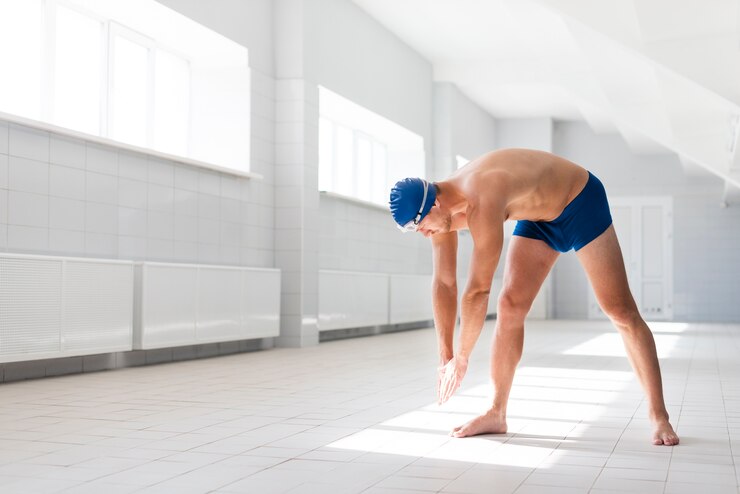Swimming is one of the most effective forms of exercise, offering a full-body workout that is accessible to people of all fitness levels. Whether you’re a beginner looking for a low-impact way to stay active or a seasoned athlete aiming to enhance your endurance, swimming provides a perfect balance of cardio, strength, and flexibility training. With its myriad health benefits and versatility, swimming has earned its reputation as a lifelong fitness activity.
In this article, we’ll explore the benefits of swimming, outline essential techniques, provide tips for beginners, and delve into its role as a comprehensive workout for the entire body.
The Benefits of Swimming
Swimming offers a unique combination of physical, mental, and therapeutic benefits, making it a standout choice for individuals of all ages.
1. Full-Body Engagement
- Muscle Activation: Swimming engages nearly all major muscle groups, including the arms, legs, core, and back.
- Balanced Development: Unlike many land-based exercises, swimming promotes symmetry and balance in muscle development.
2. Cardiovascular Health
Swimming is a fantastic cardiovascular workout that:
- Strengthens the heart and lungs.
- Improves circulation.
- Reduces the risk of heart disease and high blood pressure.
3. Low-Impact Exercise
- Joint-Friendly: The buoyancy of water reduces strain on joints, making it ideal for individuals with arthritis or injuries.
- Recovery Aid: Swimming can speed up recovery by increasing blood flow to sore muscles.
4. Mental Health Benefits
- Stress Relief: The soothing properties of water help alleviate stress and promote relaxation.
- Enhanced Mood: Regular swimming can boost serotonin levels, combating anxiety and depression.

Swimming Techniques for a Full-Body Workout
To maximize the benefits of swimming, mastering a variety of strokes is essential. Each stroke targets different muscle groups, providing a comprehensive workout.
1. Freestyle (Front Crawl)
- Muscles Worked: Core, shoulders, triceps, and legs.
- Key Technique: Keep your body streamlined and use a flutter kick for propulsion.
2. Breaststroke
- Muscles Worked: Chest, triceps, hamstrings, and inner thighs.
- Key Technique: Perform a frog-like kick and a sweeping arm motion for efficient movement.
3. Backstroke
- Muscles Worked: Back, shoulders, glutes, and hamstrings.
- Key Technique: Keep your body aligned on the water’s surface and use a flutter kick.
4. Butterfly
- Muscles Worked: Core, shoulders, chest, and arms.
- Key Technique: Master the dolphin kick and synchronized arm movement for maximum power.
5. Sidestroke
- Muscles Worked: Core, obliques, and legs.
- Key Technique: Alternate arm strokes while keeping one side of your body submerged.
Swimming Routines for Different Goals
1. For Weight Loss
- Alternate between high-intensity sprints and moderate-paced swimming.
- Example Routine:
- 5 minutes warm-up (freestyle).
- 4 sets of 1-minute sprints (butterfly) with 1-minute rest.
- 10 minutes moderate pace (breaststroke).
2. For Muscle Toning
- Focus on strokes like breaststroke and butterfly, which require strength and precision.
- Use resistance tools like paddles or kickboards for added intensity.
3. For Relaxation and Recovery
- Opt for a leisurely pace with gentle strokes like backstroke or sidestroke.
- Incorporate floating or stretching exercises in the water.
4. For Endurance
- Gradually increase the distance and duration of your swims.
- Example Routine:
- 10 minutes warm-up (freestyle).
- 30 minutes continuous swimming, alternating strokes every 5 minutes.
- 5 minutes cool-down (backstroke).
Tips for Beginners
Starting your swimming journey can be intimidating, but with the right approach, you’ll feel confident in no time.
- Learn the Basics: Enroll in a beginner swimming class to master proper techniques and breathing.
- Start Slow: Begin with shorter sessions and focus on one stroke at a time.
- Use Gear: Goggles, swim caps, and kickboards can enhance your comfort and performance.
- Stay Consistent: Aim for at least 2–3 swimming sessions per week to build endurance and skill.
- Practice Breathing: Exhale underwater and inhale quickly when your face is above water.
Health and Safety Considerations
1. Warm-Up and Cool Down
- Spend 5–10 minutes stretching and performing light swimming before and after each session.
2. Hydration
- Drink water before and after swimming, as the body loses fluids even in water.
3. Pool Hygiene
- Shower before entering the pool to minimize contaminants.
- Avoid swimming if you have open wounds or contagious conditions.
4. Safety Tips
- Always swim in designated areas with lifeguard supervision.
- Use floatation devices if you’re not confident in deep water.
- Avoid swimming alone, especially in open waters.
Swimming for All Ages and Abilities
One of the most inclusive sports, swimming is suitable for individuals across the lifespan.
- For Children:
Swimming promotes coordination, water safety, and confidence. - For Adults:
It’s an excellent way to maintain fitness and relieve stress. - For Seniors:
Low-impact and joint-friendly, swimming helps maintain mobility and strength. - For People with Disabilities:
Adaptive swimming programs ensure accessibility and inclusivity for all.
Choosing the Right Swimming Environment
1. Pools
- Controlled temperature and depth make pools ideal for beginners and structured training.
2. Open Water
- Lakes, rivers, and oceans offer a challenging and adventurous experience.
- Ensure safety precautions, such as checking weather conditions and swimming with a group.
3. Swim Spas
- Compact and versatile, swim spas allow for convenient workouts at home.
The Environmental Impact of Swimming
Swimming can foster a deeper appreciation for nature, especially in open water environments. Choosing eco-friendly swim gear and supporting sustainable pool facilities can help minimize environmental impact.
Conclusion: Dive Into Fitness and Fun
Swimming is a versatile and enjoyable activity that caters to diverse fitness goals and lifestyles. Whether you’re looking to tone your muscles, improve cardiovascular health, or simply unwind, swimming offers a holistic approach to physical and mental well-being.
So take the plunge—whether in a serene lake, a bustling community pool, or the vast ocean—and discover the transformative power of swimming. Your journey to a healthier, happier you begins in the water!
